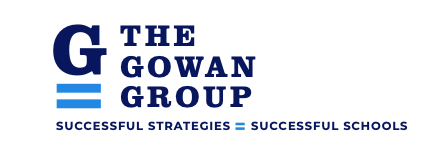 Graduate School teaches us about the many different styles of leadership: authoritative, participative and charismatic. These are but only a few styles of which we learn and practice often. It is concerning that between the many leadership classes we take in school and the numerous books we read on the subject of leadership that the most effective leadership style is rarely showcased: leading from the heart. Leading from the heart demands more courage, more participation and more outward confidence than any other leadership style. It is the most personal, the most powerful and the most introspective form as well. It demands presence in the moment. It demands self-worth. And it demands knowing oneself well enough that we are confident in ourselves. Perhaps that is why we so rarely discuss it, because it is so demanding and so, so personal. Much like traveling the rocky road of life all alone, we are more comfortable remaining within our comfort zone. Leaders have difficulty allowing others to see themselves in their entirety, because it is just so darn revealing. This is why we must lead from the heart.
Graduate School teaches us about the many different styles of leadership: authoritative, participative and charismatic. These are but only a few styles of which we learn and practice often. It is concerning that between the many leadership classes we take in school and the numerous books we read on the subject of leadership that the most effective leadership style is rarely showcased: leading from the heart. Leading from the heart demands more courage, more participation and more outward confidence than any other leadership style. It is the most personal, the most powerful and the most introspective form as well. It demands presence in the moment. It demands self-worth. And it demands knowing oneself well enough that we are confident in ourselves. Perhaps that is why we so rarely discuss it, because it is so demanding and so, so personal. Much like traveling the rocky road of life all alone, we are more comfortable remaining within our comfort zone. Leaders have difficulty allowing others to see themselves in their entirety, because it is just so darn revealing. This is why we must lead from the heart.
Leading from the heart can be difficult. Although the heart is wise and, at times, can be tenacious, it is also shy and reluctant to be trusting. The heart is an introvert. The heart demands you know thyself. It asks you to be confident in yourself before you ask others to follow. So, how do we help the heart grow with confidence? The journey of knowing ourselves through the heart actually begins and ends with the heart itself. Ask yourself, “can you define your heart virtue?” Is it compassion, collaboration, integrity, knowledge, honesty or a combination of all of the above? Until we can aptly define our heart virtue, we will not be able to lead from the heart.
Daniel Goleman, author of Emotional Intelligence, writes, "Comparing the three domains, I found that for jobs of all kinds, emotional competencies were twice as prevalent among distinguishing competencies as were technical skills and purely cognitive abilities combined. In general the higher a position in an organization, the more EI mattered: for individuals in leadership positions, 85 percent of their competencies were in the EI domain."
Martin Luther King Jr. so aptly knew his heart virtues were compassion and equality and therefore he could lead from the heart with confidence. Siddhartha Gautama, the widely acknowledged founder of Buddhism, knew his heart virtue was enlightenment and was able to lead an entire, faithful community towards inner faith and their own personal enlightenment. They both initiated reformations in their own ways. Most leaders today will not need to lead a reformation. Accordingly, we need to help others to see themselves as agents of change and encourage positive forward momentum. If we look at both Martin Luther King Jr. and Siddhartha and analyze their commonalities, we see that one might be that they both listened to themselves. They listened to their heart and then they responded to the voice they heard from within. This is the difference between reaction and reflection.
Have you ever found yourself in a situation when you were forced to make a decision and your emotions were running rampant? Often we will make a reactive decision based on what we perceive to be the truths. If we force ourselves to reflect, to look within, the truths can often be revealed, and we can respond and lead accordingly. Trust me, I have only learned this lesson from making mistakes. As a Head of School, one of the many lessons I teach the students at Harbor Country Day School is that it is ok to make mistakes. It is acceptable to fail. It is only out of failure that we truly grow and mature. I remind our students that it takes courage and tenacity to bounce back after a pitfall. Who among us has not failed at least once?
When I am faced with a challenging situation, I force myself to look within, to listen to my heart and sit still for a while. Then, and only then, do I respond. Then I act with confidence and know I am leading from the heart.
I learned some of what has shaped my perspective on leadership from professional life coach, Lolly Daskal. She is a very wise and introspective woman who helps many learn about Leading From Within.

